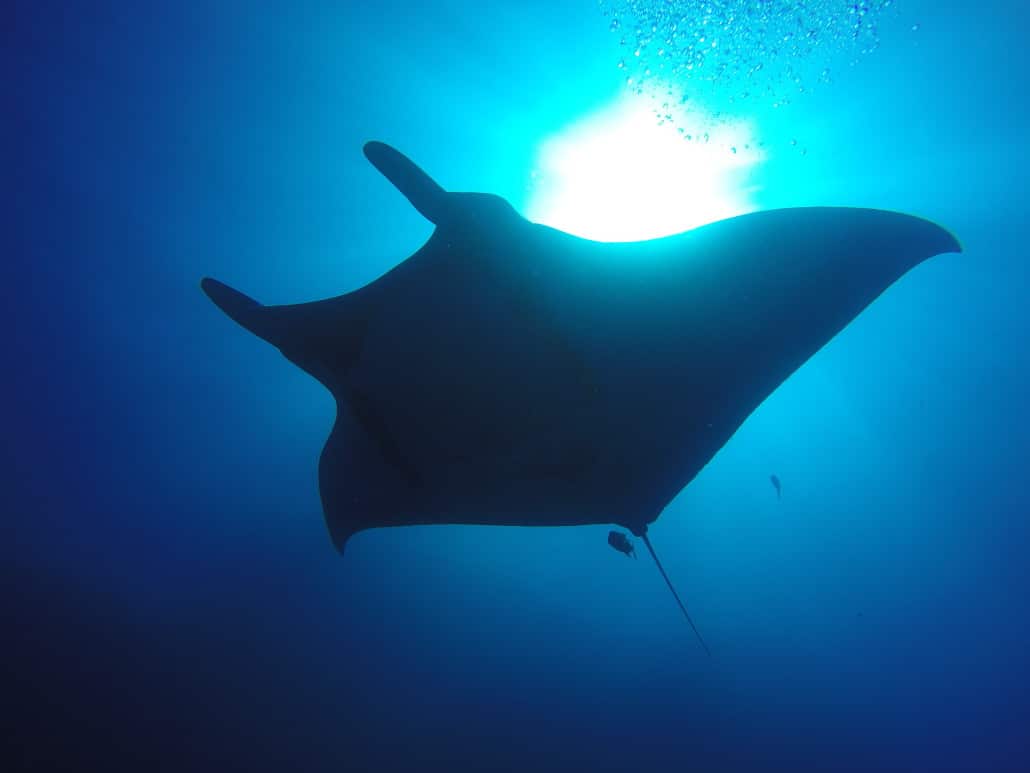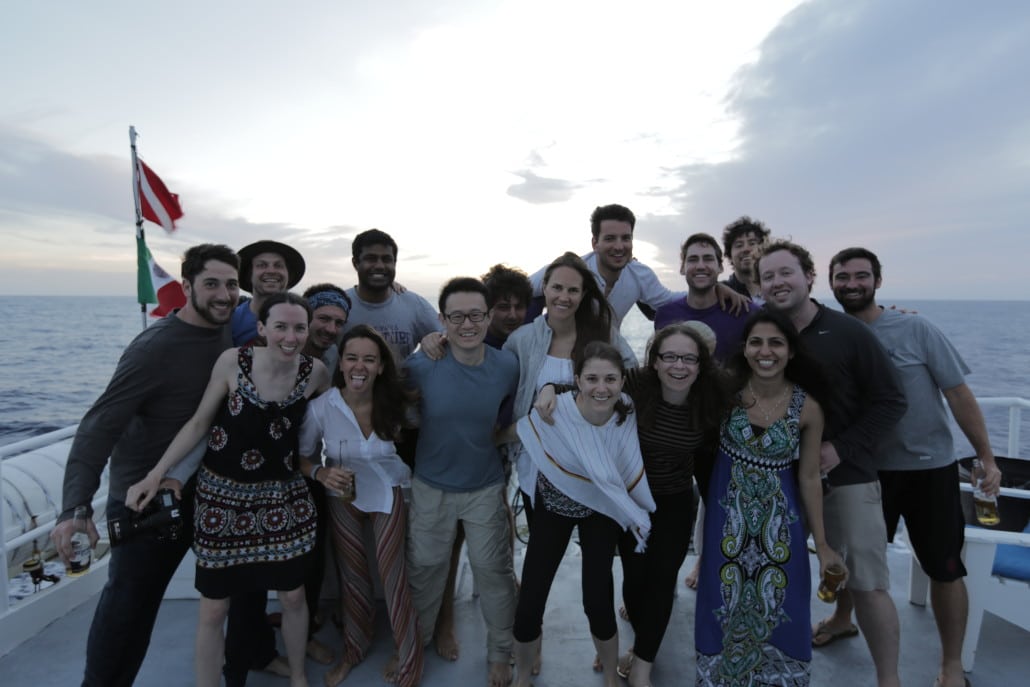
This is the third and final part of Marcela Swenson’s three-part series on her diving adventure in Mexico’s Revillagigedo Islands. Check out Part 1 here and Part 2 here.
Diving, day four
On day four, at Roca Partida, I woke up with stomach pains and decided it would be in my (and my wetsuit’s) best interest if I sat out on the dives until I was feeling better. If you’re not feeling great above the water, you’ll probably feel even worse with a tank strapped to your back and a seven-mm suit encasing your entire body like a neoprene sausage.
By all accounts, I missed out on some of the best dives of the entire trip. Over the course of our group’s four dives they encountered playful dolphins, countless sharks and giant mantas. I, on the other hand, watched Titanic in Spanish with the crew.

Diving, days five and six
We spent our last two days of diving back at San Benedicto where we encountered more dolphins, got nice and close to a family of four hammerhead sharks, and of course, spent some quality time with giant mantas. When I say “giant,” I mean the average manta measures 21 feet from wingtip to wingtip. Some lucky divers even chanced upon another humpback whale on their way back to the boat. But before we knew it, it was time to make the long 24-hour journey back to the mainland.

Back on “solid” ground
Immediately upon setting foot on land for the first time in eight days, I experienced a foreign sensation dubbed “land sickness.” Apparently, after prolonged time on a boat our brains compensate for the motion of the boat, which is helpful until you get back on land and suddenly it feels like the ground is rising and falling beneath your feet. At first the novelty of it was entertaining; it almost felt like being drunk, but without the tequila shots. But after 24 hours, 48 hours, 62 hours of feeling like I was still cruising on the Pacific, it got tedious. I felt like a zombie at work. Walking down long hallways felt like being in a carnival funhouse, and the only time I felt normal was in a car because of the similar motion to a boat’s.
The intensity of the land sickness slowly started to fade, but in all, I felt its effects for a whole week. Some members of our group wore Scopolamine Transdermal patches behind their ears to prevent sea sickness and none of them reported feeling land sickness, so perhaps that’s a preventative measure I can take in the future. Even though I never felt seasick on the boat, the land sickness incapacitated me to such a degree that I will have to rule out long-term boat travel if I ever experience it again.
Despite the motion sickness, our week-long adventure in the Revillagigedo Islands was exactly what we had expected: unforgettable and unrepeatable. We had incredibly great fortune to have seen all of the sea-life we had hoped to, and we had excellent weather conditions to boot. We saw an incredible part of our planet that would never have been on our radar had it not been for our underwater ambassadors, Ana and Jero. Here’s hoping there will be many more unique dive trips in our near future!
To see it for yourself…
If you want to see Revillagigedo for yourself, the best time to go is between November and May. November to early January and April-May are the best times to see mantas and sharks, while the waters are at their warmest. Humpbacks sightings are more frequent when the water is colder from late January to early April.
No words can describe the magic of Revillagigedo and the creatures that call its waters their home. Watching this video—shot and edited by Jeronimo Prieto—is the next best thing to experiencing it yourself:




